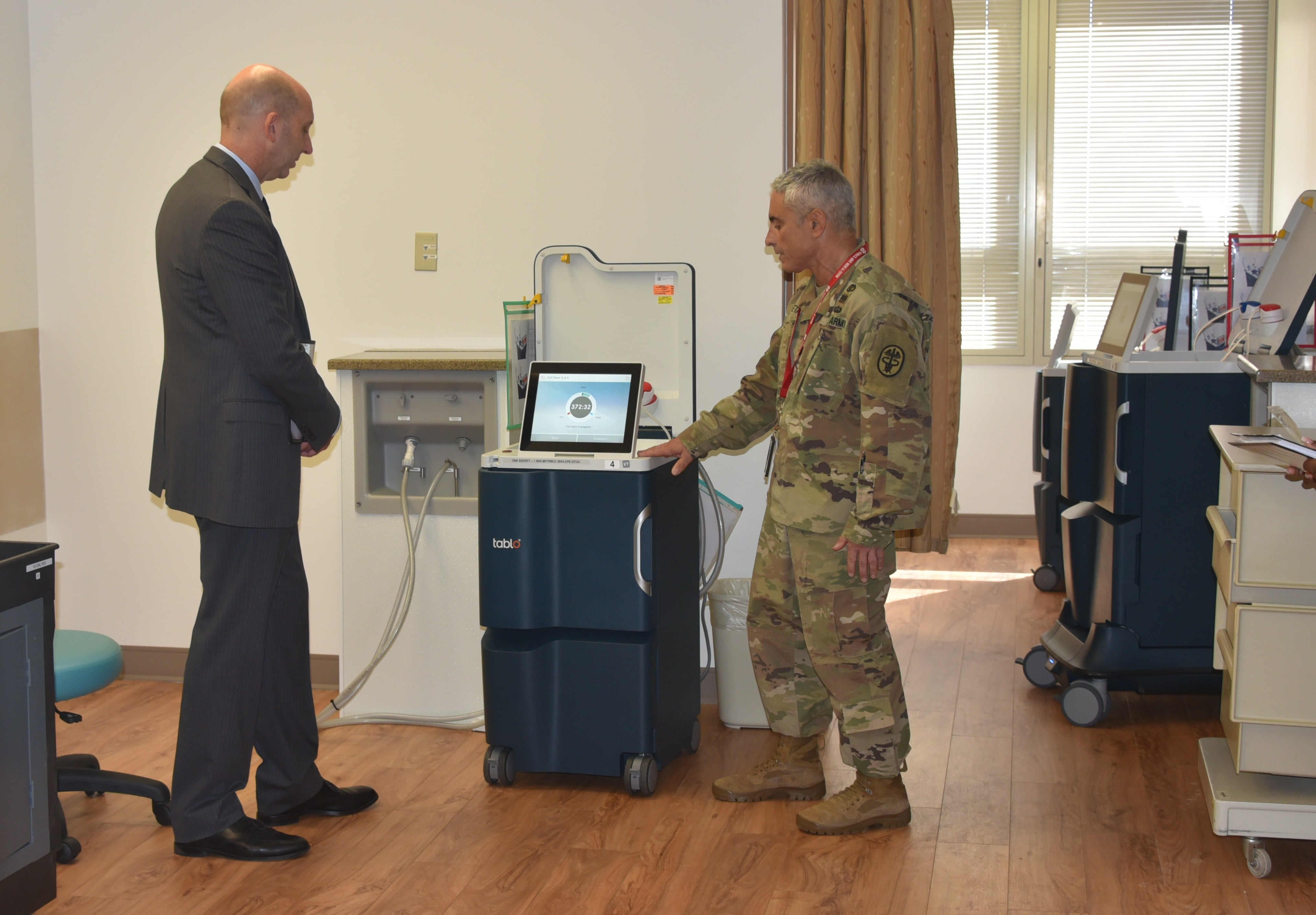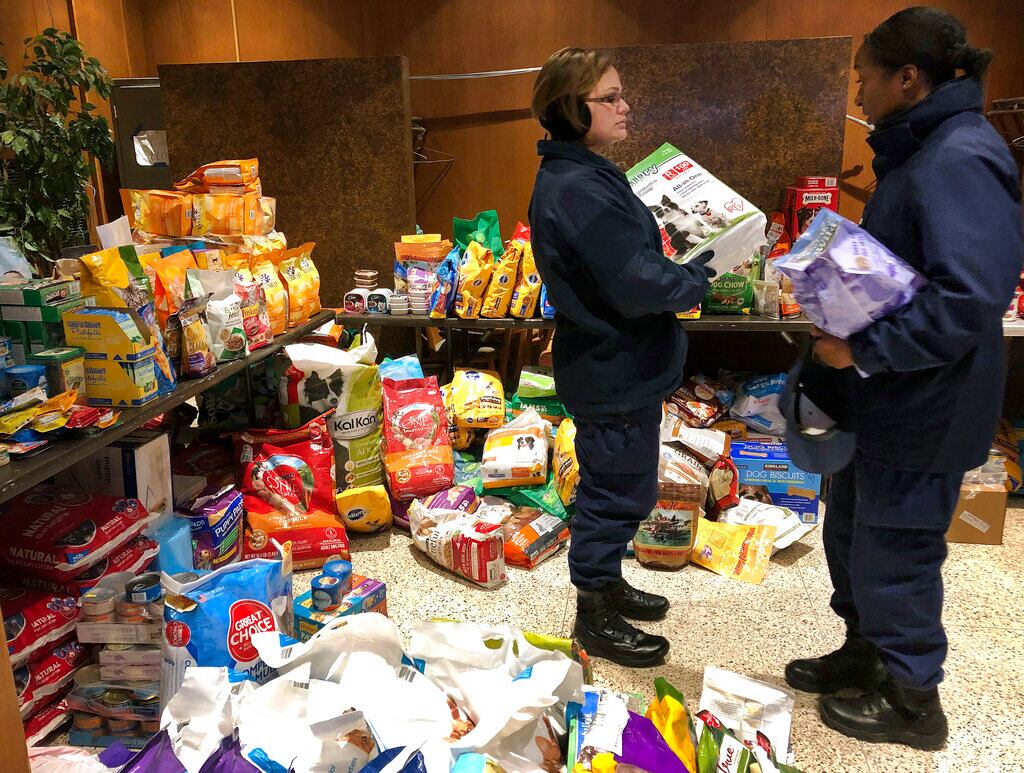NORFOLK, Va. — Let's face it, not every sailor is cut out to be a recruiter — selling the Navy to the next generation — or a recruit division commander, making sailors out of civilians at Naval Station Great Lakes, Illinois.
But what cando sailors do to take their careers to the next level do if they don't want either of those two jobs?
Related: Other career-boosting shore jobs: recruiting & RDC
The service has openedlaunched another avenue — shore duty at the maintenance centers that fix the fleet.
It's in-rate duty that willcan fast-track a young sailors's careers, officials say, by teaching them new skills, officials say, andincreasing boosting their chances to advance to the next paygrade because of the that knowledge they gain. Sailors can also accrue more Navy Enlisted Classifications, making them more valuable to their commands – and arming them with special skills that may be highly sought in the civilian world.
Right now, there are's nearly 8,000 billets available to sailors in surface and aviation ratings. For surface engineering and some combat systems ratings, there are's the six regional maintenance centers in fleet concentration areas. On the aviation side, there's duty at one of the nine Ffleet Rreadiness Ccenters at various air stations around the fleet.
The skills sailors pick up at RMCs produce tangible benefitspay off. RMC sailors advanced up the petty officer ranks at a rate 10 percentage points higher rate than the fleet average during the spring cycle, officials said. RMC jobs are among the fleet's open secrets, as the Navy moves to increase the shore billets by 350 over the next few years.
Surface
Today, there are's roughly 2,550 billets in surface engineering and combat ratings at one of four stand-alone maintenance centers located in Norfolk, San Diego and Mayport, Florida. There are 's also shipyard-based RMCs in the Pacific Northwest and Pearl Harbor, Hawaii. And then there's also a newly created forward-deployed RMC based in Naples, Italy, with detachments in both Rota, Spain, and Bahrain.
"The mission of the RMCs is to train sailors and provide them a good sea-shore rotation opportunity in rate, and then, secondly, it's secondly to fix ships," said Rear Adm. Bill Galinas, who commands all the RMCs from his Norfolk headquarters. "The training sailors get while here is really second to none."
Traditional school-houses can only go so far, he said — what sailors get at the RMC is hands-on work on a daily basis, digging deeper into gear than they're allowed to go aboard ships.
The maintenance done at RMCs is the intermediate level of work, Galinas said.
"That young sailor coming off the ship is used to doing O level — organizational level — maintenance," he said. "Most of it is planned, preventive maintenance and on a lesser level, they do very basic corrective maintenance while the ship is at sea."
By spending a tour doing intermediate level maintenance — complicated repairs beyond the skills and facilities available to a ship crew — sailors gain get a deeper understanding of their requirements of their ratings, he said, information invaluable for advancement tests and job performance.
For example, Galinas said, gas turbine mechanics rarely go very deep into their engines while at sea. But during a tour at an RMC, a mechanicGSM could spend histheir tour taking apart engines and rebuilding them. Many will also learn how to swap out engines on a ship as a member of a maintenance assist teams. All ratings have the opportunity to serve on these assist teams.
Galinas calls his maintenance centers the Navy's largest "seaSEA" schools. And at the heart of the program is the progression of a sailors through the levels of apprentice, journeyman and, ultimately, master levels in their given ratings.
"They leave the ship as an apprentice and they come here and learn and become a journeyman," said Dan Spagone, head of the intermediate maintenance for the RMCs. "So when they go back to sea, they can work independently and talk to the tech assist people and do repairs themselves."
Getting sailors from apprentice to journeyman, Spagone said, requires focus throughout their tour at the maintenance center, Spagone said.
Sailors enroll in the Navy Afloat Maintenance Training Strategy, which are the personnel qualifications sailors must demonstrate mastery of. They can also get civilian qualifications through the United Services Military Apprenticeship Program.
"Our NAMTS certificates are built off the USMAP, the Department of Labor standard, so we encourage sailors when they get something signed off in NAMTS to also get it signed off on USMAP," Spagone said.
Through NAMTS, sailors can qualify for extra NECs.
"We're up to 21 NEC's across all the ratings," Spagone said, and officials are constantly looking for more qualifications that their sailors can obtain. Two more NEC's are currently in the development and approval chain as well.
And what this all boils down to for the sailor, Galinas said, is advancement.
"Because they are working in their rating and also learning their job on a deeper level, they are learning and doing things on a daily basis they're expected to know on their advancement exams," Galinas said. "We track how our sailors are advancing against the fleet average and what we're finding that at the E-4 to E-6 level we're maintaining above-fleet averages."
Many sailors don't know about this duty because as recently early as just four years ago, the Navy had less than half the billets for these jobs as they do today. From the mid-1990s to 2010, the available billets dropped from nearly 10,000 to just 1,400 billets Navy-wide.
But when readiness suffering in the surface fleet suffered from years of undermanning RMCs and ship crews, officials decided to increase the size of the RMCs and rebuild the deck plates technical know-how.
"We are today just above 2,550 [billets]," Galinas said. "From the end of 2010 to the end of 2014, we've increased the numbers of sailors at the regional maintenance centers by about 76 percent — and we're going through the budget exercises now to see if we can buy back even more."
The hope is, over the next couple of fiscal years, he said, was to add an additional 350 billets, he said.
Asked if this duty is one of the Navy's best-kept secrets, Galinas agreed.
"I'd say that right now, it probably is," he said. "But it's a secret we'd like to see get out."
Aviation
For sailors in aviation maintenance ratings, there's similar shore duty available at the Flfleet Rreadiness Ccenters.
The nine centers, which offer a total of 5, 190 billets, comprise three major commands — in San Diego, Cherry Point, North Carolina, and Jacksonville, Florida — and five minor commands: Naval Air Stations Whidbey Island and Lemoore on the West Coast; Oceana and Pax River on the East Coast; and overseas at Naval Air Facility Atsugi, Japan.
As with the surface force, the work is concentrated on the intermediate level of maintenance. But unlike the surface force, not all ratings have billets at every FRC, said Cmdr. Jose Martinez, head of the San Diego readiness center.
"We don't have any mechanics here because we are a helicopter-based shop, and we don't overhaul engines here," he said. "The components we work on here are mainly avionics, ordnance and aviation life support equipment."
But the benefit of the duty, is the same as it is for their shore counterparts.
"These sailors are exposed to things at this level they never see otherwise," Martinez said. "Sailors in squadrons spend more time swapping out components that are bad. It's only when they get to an FRC that sailors get to dig into those components and fix them."
Sailors at the FRCs can accrue NECs and work on the coveted FAA Airframes and Powerplants certifications that are available through the Navy's Credentialing Opportunities Online system.
Officials don't have any FRC-wide statistics on advancement, but sailors told Navy Times they have noticed a difference in their knowledge base when they take the testwhat they've picked up while taking the test.
"The level of knowledge I've gained here will allow me to identify problems quicker and know better how to fix them when I return to the fleet," said Aviation Electronics Technician 2nd Class (AW) Rachel Nicholson, an eight8-year Navy veteran.
Nicholson just missed making first class by one point on this past cycle, something she says isn't bad for her first time up for E-6. She has high expectations the next time around.

Mark D. Faram is a former reporter for Navy Times. He was a senior writer covering personnel, cultural and historical issues. A nine-year active duty Navy veteran, Faram served from 1978 to 1987 as a Navy Diver and photographer.




